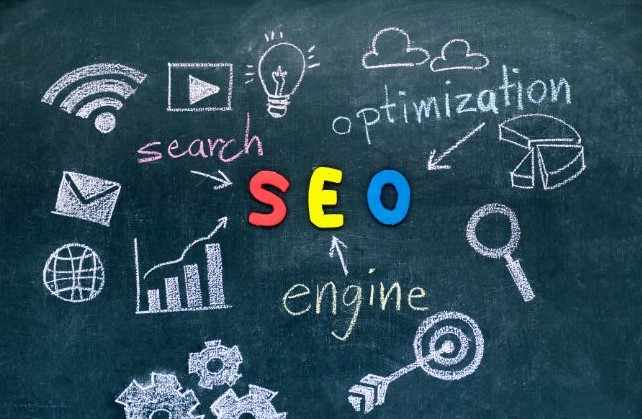

E-Commerce SEO: Ranking Your Products on Search Engines
Introduction
In the ever-expanding world of e-commerce, getting your products in front of potential customers is a constant challenge. Search engine optimization (SEO) is the key to unlocking the visibility your products need. This article delves into the realm of e-commerce SEO, offering insights into how to optimize product listings for search engines. We’ll explore the importance of keyword research, on-page SEO techniques, and effective backlink strategies to elevate your product rankings and drive organic traffic to your online store.
The Power of E-Commerce SEO
E-commerce SEO involves optimizing your product listings and website to rank higher in search engine results pages (SERPs). A well-executed SEO strategy offers several benefits:
1.Increased Visibility: Improved rankings make your products more visible to potential customers, increasing the chances of making a sale.
2.Organic Traffic: SEO drives organic (unpaid) traffic to your website, reducing your reliance on paid advertising.
3.Cost-Effective: While SEO requires effort, it offers a cost-effective way to attract customers compared to paid advertising.
4.Long-Term Results: The benefits of SEO often last longer than the immediate effects of paid advertising campaigns.
GET EXCLUSIVE ACCESS TO OUR EXPERTS THIRD PARTY PLATFORM SELLERS' TIPS AND ADVICE:
- Get AHEAD of the Competition.
- FREE Membership to Sarah’s Weekly Insiders secrets.
- FREE tailored resources and gifts.
- PLUS qualify to receive personal email support.

* We respect your privacy. We will not spam you.
Optimizing Your Product Listings
Effective e-commerce SEO starts with your product listings. Here’s how to optimize them for better search engine visibility:
1. Keyword Research:
Keyword research is the foundation of e-commerce SEO. Identify the keywords and phrases your potential customers are likely to use when searching for your products. Tools like Google Keyword Planner, Ahrefs, and SEMrush can help you discover relevant keywords with search volume and competition data.
2. On-Page SEO:
Optimize your product listings with these on-page SEO techniques:
Title Tags: Craft descriptive, keyword-rich titles that accurately represent your product. Include the primary keyword toward the beginning of the title.
Meta Descriptions: Write compelling meta descriptions that encourage click-throughs. While meta descriptions don’t directly impact rankings, they can influence user behavior.
High-Quality Images: Use high-quality images that are visually appealing and relevant to the product. Optimize image file names and alt tags with keywords.
Product Descriptions: Create detailed, unique product descriptions that highlight features, benefits, and specifications. Incorporate relevant keywords naturally.
User Reviews and Ratings: Encourage and showcase user reviews and ratings. Positive reviews can improve click-through rates.
URL Structure: Ensure your product URLs are clean, descriptive, and include relevant keywords. Avoid long, convoluted URLs.
3. Mobile Optimization:
With an increasing number of users shopping on mobile devices, it’s crucial to ensure that your product listings are mobile-responsive. Google also considers mobile-friendliness as a ranking factor.
4. Site Speed:
Fast-loading pages enhance the user experience and can positively impact SEO. Compress images, minimize unnecessary scripts, and use content delivery networks (CDNs) to improve site speed.
5. Structured Data:
Implement structured data (schema markup) to provide search engines with additional information about your products. This can result in rich snippets, which make your listings stand out in search results.
Effective Backlink Strategies
Backlinks, also known as inbound links, are links from external websites that point to your e-commerce site. They are crucial for SEO because they signal to search engines that your site is trustworthy and authoritative. Here’s how to build effective backlinks for your e-commerce store:
1. Content Marketing:
Create valuable, shareable content that naturally attracts backlinks. Blog posts, infographics, videos, and guides can be link-worthy assets.
2. Guest Blogging:
Write guest posts for reputable websites in your industry. Include links back to your product listings when relevant. Guest blogging not only builds backlinks but also establishes you as an industry authority.
3. Influencer Outreach:
Leverage influencers in your niche to promote your products and create backlinks. Influencers often have a substantial following, and their endorsement can drive traffic and boost your SEO.
4. Online PR:
Press releases and PR efforts can result in media coverage and backlinks. Share new product launches, company news, or industry insights.
5. Broken Link Building:
Identify websites with broken links that point to content similar to yours. Reach out to the site owners, inform them about the broken links, and suggest your content as a replacement.
Monitoring and Optimization
SEO is an ongoing process, and monitoring your results is crucial. Regularly analyze your SEO efforts using tools like Google Analytics, Google Search Console, and SEO-specific platforms like Moz or Ahrefs. Here’s how to monitor and optimize your e-commerce SEO strategy:
1. Keyword Ranking:
Keep an eye on your product listings’ keyword rankings and track changes over time.
2. Traffic and Conversion:
Monitor organic traffic and conversion rates to ensure that your SEO efforts are translating into real business results.
3. Competitor Analysis:
Regularly assess your competitors’ SEO strategies and adapt to changing market conditions.
4. Content Updates:
Review and update your content regularly to keep it fresh and competitive.
5. User Experience:
Ensure that your e-commerce website offers a seamless and positive user experience, as this indirectly impacts SEO.
Conclusion: Elevate Your E-Commerce Success with SEO
E-commerce SEO is a powerful tool for increasing the visibility of your products and attracting organic traffic to your online store. By optimizing your product listings with effective on-page SEO techniques and building a strong backlink profile, you can rise in search engine rankings and establish a strong presence.
MORE LIKE THIS...
Bringing you the latest information, ideas, products and services for your E-commerce business.
Copyright 2024 E-Market Pulse
Contact Us
We may receive compensation from partners listed through affiliate partnerships, at no cost to you. This doesn’t influence our ratings, and the opinions are our own
Subscribe to our Newsletter
Get updates on products and services specially targeted to help you succeed.
